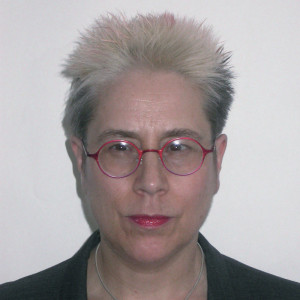Dr. Linda Sparke: Working on new ideas for NASA’s long-term missions
Dr. Linda Sparke gets to "gawk at space hardware" as part of her job as research program manager in astrophysics at NASA,
Dr. Linda Sparke, the research program manager in astrophysics at NASA, tells Federal News Radio what she enjoys about being a public servant.
Tell us something about your job that most people probably don’t realize.

When most people think of NASA they think of people flying in space. They think of the space shuttle, the International Space Station, but here in the Science Mission Directorate where I work what we do is basically launch robots into space. No people involved once it’s up there, except occasionally when they go fix it. These robots range from the multibillion dollar Hubble Space Telescope and the Curiosity Rover on Mars down to things the size of a shoe box, which will generally carpool with something else and you can get a swarm of these little shoebox things that will, say, fly through a magnetic storm around the Earth and will tell you what’s happening in all the different areas of it. So, it’s a big range.
How does your job connect citizens in a more efficient or effective way?
I’m in astrophysics and our projects are telescopes and not rovers. Telescopes need instruments to make the measurements and the scientists who think of the projects and who think up the instruments on the telescopes to make the measurements, they’re not all NASA people. Most of them, in fact, are universities and science institutes that are all over the country. My job in particular is to coordinate the research competitions, which are for scientists who are asking for fairly small amounts of money that will support them and a graduate student or two to work in their lab and start working on new ideas for things that we will be working on 20 or 30 years from now. The cutting edge technology, which is going to be flaky and needs to be developed in labs so it is robust enough to fly in space. That’s the program I coordinate.
What do you think is the best thing you’ve done in your job?
The most exciting thing is going to gawk at space hardware before it’s going into orbit. I was able to see the Curiosity Mars Rover when they were putting the final bits and pieces on it. Right now, out at Goddard [Space Flight Center] in Greenbelt the James Webb Spacescope, the entire huge mirror is exposed and if I didn’t have meetings like this one I could go out and watch my reflection in that mirror and wave at myself. Some of my colleagues are doing exactly that and then it’d be covered up to keep the dust off it.
The best thing is really what I do every day. It takes as long to build a space mission as a does to build a cathedral, it’s a 20, 30 year [endeavor] from the early technology, to figuring out what you can do, to deciding OK this is how you do the big mission, to rounding up the money for the big mission, to actually putting it together and then flying it in space and getting the science down. Hubble is 25 years in orbit now, so the people who started working on Hubble started 50 years ago. So what I do day-to-day, running the research missions for scientists all over the country to do early stage technology, keeping that research program healthy, is going to give us the telescopes of 20, 30, 40 and 50 years from now and that’s the best thing I do. That’s why I come to work in the morning.
What’s the best piece of job related advice you’ve ever received?
Don’t surprise the boss. Your boss or your boss’s boss’s boss is responsible to the taxpayer for how your agency spent the piece of money that you’re in charge of and has to explain it to Congress and explain it to the public. The more they know the better they can do that job, if there’s a problem they can get you the resources to fix it, if you’re doing well they can make sure that people know about it and NASA gets the credit and I might get a little of the reflected glory.
Read all our coverage of the 2016 Public Service Recognition Week.
Copyright © 2024 Federal News Network. All rights reserved. This website is not intended for users located within the European Economic Area.
Scott Maucione is a defense reporter for Federal News Network and reports on human capital, workforce and the Defense Department at-large.
Follow @smaucioneWFED






